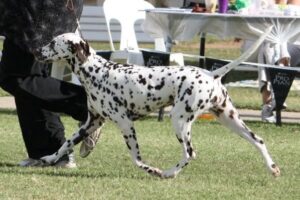
More than Just Their Spots
Discover judging Dalmatians beyond spots—insights into their traits, movement, and breed history await in this article.

Home » Dog Breeds » Dalmatian Dog Breed
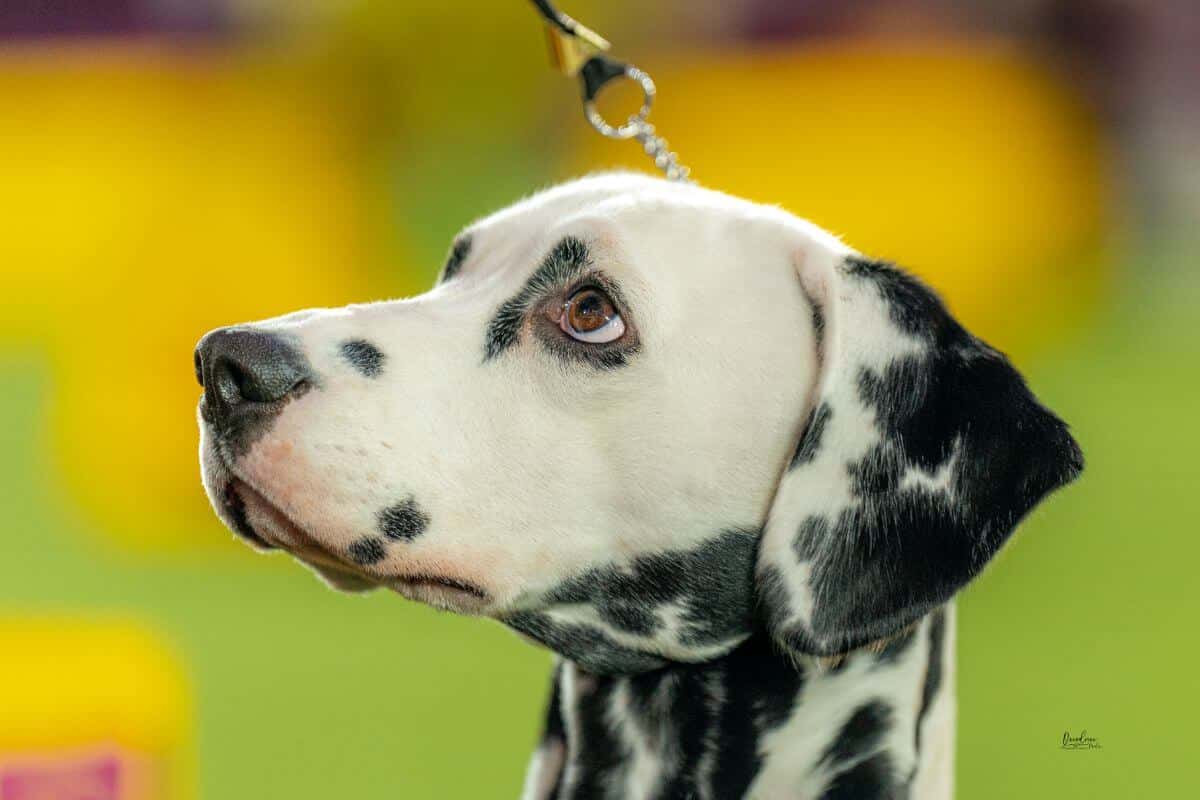
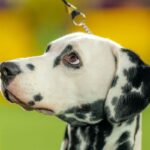
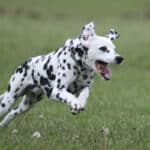
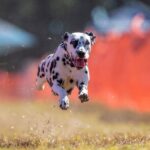
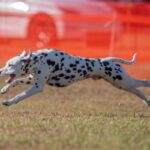
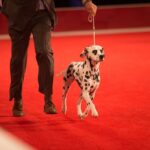
The Dalmatian is a breed of great distinction, known for its unique spotted coat, balance, and poise. Originally used as a coach dog, the breed has a rich and useful history that is reflected in its versatility, athletic build, and intelligent expression. Dals, as they are called by their friends, are outgoing and alert, making them excellent watchdogs as well as trusted companions. They are renowned for their stamina and endurance, traits that made them effective as the escorts and guardians of horse-drawn carriages.
Non-Sporting
19 – 24 inches
45 – 70 pounds
11 – 13 years
| Country of Origin | Croatia |
|---|---|
| Bred For | Coach Dog, Companionship |
| Known For | Endurance, Spotted Coat, Symmetry |
| Popularity | Moderate |
| Temperament | Alert, Dignified, Outgoing |
| Activities | Running, Hiking, Watchdog, Conformation Shows, Dog Sports |
The Dalmatian is a breed rich in history and distinctive in appearance, known for its uniquely spotted coat. The breed’s origins are somewhat mysterious, with various theories suggesting its early presence in Europe, Asia, and Africa. Historical documentation and artistic depictions indicate the breed has been known since ancient times.
The name “Dalmatian” is generally believed to derive from Dalmatia, a region of present-day Croatia, where the breed was notably present and refined. However, the exact origins of the breed are still subject to debate among canine historians and breed enthusiasts.
Dalmatians were historically used for a variety of purposes. They were known as carriage dogs due to their unique ability to run alongside horse-drawn vehicles. Their role offered both style and protection, and was extended to the breed’s use as a firehouse dog that would run ahead of fire engines to clear a path and guard equipment. The Dal’s enduring association with firehouses remains a symbolic aspect of the breed’s history.
In addition to these roles, Dalmatians have been used as hunting dogs, circus performers, and war sentinels, showcasing their versatility and adaptability to complete various tasks and in a variety of environments.
The breed gained official recognition by major kennel clubs in the late 19th and early 20th centuries. The American Kennel Club (AKC) recognized the Dalmatian in 1888, acknowledging its distinct qualities and many contributions. The Fédération Cynologique Internationale (FCI) and The Royal Kennel Club (UK) also recognized the breed, further solidifying its status within the international dog community.
Throughout its history, the Dalmatian has remained a symbol of elegance, strength, and intelligence. The breed’s unique spots, athletic build, and dignified demeanor have made it a much loved and recognizable breed worldwide. Whether in the show ring, as a companion, or in various working roles, the Dal continues to be enjoy enduring support from its legion of admirers.
An adult Dalmatian typically stands at about 19 to 24 inches tall at the shoulder. In terms of weight, mature Dals usually weigh between 45 and 70 pounds. This contributes to the breed’s distinctive profile and lends itself to its historical and contemporary roles.
The Dalmatian is a harmoniously built dog, showcasing a balance between strength and elegance. This breed has a square-proportioned body, meaning the length of the body, from the forechest to the buttocks, is approximately equal to the height at the withers. This proportion contributes to the breed’s efficient, balanced, and effortless movement.
The Dalmatian possesses substantial bone, yet without a hint of coarseness. This combination of strength and balance is vital for endurance and speed, attributes that are essential for the breed’s function as a coach dog.
Texture: The Dalmatian’s coat is a defining feature of the breed, characterized by its short length and fine texture. It lies close to the body, giving the dog a sleek and glossy appearance. This coat is not only distinctive but also practical, providing a certain degree of protection while being relatively easy to maintain.
| Standard Color | |
|---|---|
| White & Black | ee |
| White & Liver Brown | ee |
A Note About Color: The coat of the Dalmatian has a pure white ground color with distinct spots in dense black or liver-brown. The spots should be round and well-defined, varying in size from a dime to a half-dollar. The ears are preferably spotted, and the spots on the head, legs, and tail are usually smaller than those on the body. Spots should be evenly distributed; however, patches (a solid mass of black or liver without an intermingling of white) are unacceptable in the breed.
| Standard Marking | |
|---|---|
| Black-Spotted | ee |
| Liver-Spotted | ee |
The Dalmatian’s tail is a natural extension of the topline. It is strong at the root and moderately set, not too low, and tapers towards the tip. The tail is carried in a slight upward curve and should never be curled over the back in a ring shape or set too low on the body. Instead, it reaches to the hock and is never docked. Since the breed was developed to run alongside horse-drawn carriages, the tail provides balance when the dog is moving at a trot. Its coat is dense and sleek, and continues the pattern of spots that is the breed’s distinctive feature.
Owning a Dalmatian can be a unique and rewarding experience, as this breed is known for its distinctive appearance and energetic personality. However, it’s essential for potential caretakers to understand the responsibilities of owning this breed. Dals are active, intelligent dogs that require regular exercise, mental stimulation, and consistent training. Their social nature means they thrive in environments where they can interact with their human companions and participate in many and varied activities.
The Dalmatian is a generally healthy and robust breed, but like all dogs, they can be prone to certain health issues. Owners should be mindful of any symptoms and maintain regular veterinary check-ups to ensure the long-term health and well-being of their dogs.
The average lifespan of a Dalmatian ranges from 11 to 13 years. Early detection and management of any health issue can contribute significantly to a Dal’s quality of life.
The Dalmatian, like any breed and mixed breed, has a few specific health concerns. Being informed about these can help to provide the dog with the very best of care. Some of the risks include:
Regular vet check-ups and preventive care are crucial for early identification and management of these health issues. Discussions with a veterinarian about appropriate health screenings and proactive care can greatly contribute to the long-term well-being of a Dalmatian.
Understanding the Dalmatian’s personality is key to maintaining a harmonious relationship with this breed. The Dal is known for its high energy levels and intelligent mind, traits that necessitate regular mental and physical stimulation. Consequently, these dogs are generally well-suited to experienced dog owners who can provide consistent training and socialization.
Dalmatians tend to have a sensitive nature, which means they often respond best to positive reinforcement training techniques. Harsh methods often lead to counterproductive outcomes. When it comes to being alone, Dals can manage short periods by themselves, but given their social inclination, they prefer the company of their human partners or other pets. Extended periods of isolation can lead to undesirable behaviors stemming from boredom or anxiety.
As for interactions with other dogs and young children, Dalmatians usually do well, especially if they are socialized from a young age. However, their size and exuberance can be overwhelming for very young children, so supervision and proper introduction are crucial. In terms of their disposition towards strangers, Dals can be reserved initially but typically warm up once they realize there is no threat. This breed, with its vigilant and protective nature, can be an effective watchdog.
Overall, Dalmatians are affectionate and loyal companions. They thrive in environments where they can participate in activities with their families and have enough space to expend their energy. For the right handler or household, a Dalmatian can be a joyful and engaging member of the family.
Proper feeding and nutrition are crucial for the health and well-being of a Dalmatian. Given the breed’s energetic nature, these dogs require a diet that adequately fuels their active lifestyle while also considers their unique health needs, particularly their predisposition to urinary stones.
When it comes to puppies, a Dalmatian pup’s diet should be carefully monitored to support rapid growth without overfeeding, which can lead to bone and joint problems. High-quality puppy food formulated for medium-to-large breeds is generally recommended, split into multiple meals throughout the day to aid digestion and prevent bloat.
For adult Dalmatians, the dietary focus shifts to maintaining an ideal body condition. A balanced diet with appropriate levels of protein, fats, carbohydrates, and essential nutrients is key. Adult Dals typically do well on two meals per day. The amount of food, usually measured in cups, varies depending on the dog’s size, age, activity level, and metabolism. It’s important to adjust food portions accordingly to prevent obesity, which can exacerbate health issues like joint problems.
Dalmatians have a unique urinary system that makes them prone to forming urate stones, so their diet should aim to maintain a proper urinary pH. This may involve choosing foods with certain protein sources or feeding a diet formulated for urinary health. It’s also essential to make sure they have constant access to fresh water to help flush their system and reduce the risk of stone formation.
Regular consultation with a veterinarian or a canine nutritionist can provide tailored advice to meet the Dalmatian’s specific dietary needs. With a well-managed diet, a Dal can enjoy a healthy, active life alongside its human companions.
Training a Dalmatian requires an understanding of the breed’s intelligent yet sometimes stubborn nature. These dogs, with their quick minds and high energy levels, respond best to engaging and consistent training methods. Training should ideally begin from a young age, as early socialization and basic obedience lay the foundation for a well-behaved adult dog.
Dalmatians are known for their intelligence, which makes them generally easy to train, but their independent streak can sometimes pose a challenge. Positive reinforcement techniques, such as using treats and praises, work effectively in motivating them during training sessions. It is crucial to be patient and consistent, as mixed signals or irregular training can lead to confusion and undesirable behaviors.
While Dalmatians are not typically excessive barkers, they will bark to alert their family to something unusual. Their vocalizations, however, are more about communication than a tendency towards incessant noise-making. Training can help to manage the barking and help with understanding when it’s appropriate to be vocal.
The breed’s intelligence and high energy also mean Dalmatians can have a moderate potential to wanderlust. They may chase after interesting scents or moving objects if not properly trained or confined. Therefore, it’s important to teach a reliable recall command and provide a secure environment when they’re off-leash.
In terms of predation, Dalmatians were historically used as hunters and some dogs may still possess the instinct to chase. This trait can be managed with proper training and socialization, especially if the dog is introduced to different environments and situations from a young age.
The exercise needs of a Dalmatian are an important aspect to consider for anyone looking to welcome this breed into their home. Known for its high energy levels and athletic build, this breed requires regular and ample physical activity to maintain its physical and mental well-being.
| Energy Level | Moderate |
|---|---|
| Exercise Requirements | 2 Hours/Day (Minimum), Daily Walks, Vigorous Running, Regular Exercise, Playing with Another Dog, Mental Stimulation |
Dalmatians possess a significant amount of energy that needs to be channeled appropriately through exercise. These dogs thrive on daily activities such as long walks, runs, or hikes. Their stamina and endurance make them excellent companions for jogging or biking, but it’s important to gradually build up to more intense activities, especially for young dogs whose joints and bones are still developing.
The intensity of the exercise should match the dog’s age, health status, and individual energy level. While younger and more active Dalmatians might require more vigorous exercise, older dogs may do well with moderate but consistent activity. It’s essential to observe their behavior and adjust their exercise routine accordingly.
Playfulness is another characteristic of the Dalmatian. These dogs enjoy interactive games like fetch, frisbee, and tug-of-war, which not only provide physical exercise but also offer mental stimulation. Engaging in play is a great way for Dals to bond with their human companions and to burn off extra energy.
In addition to physical activities, mental exercise is also crucial for this intelligent breed. Interactive puzzle toys, regular training sessions, and obedience games can help to keep a Dal’s mind active and prevent boredom, which can sometimes lead to destructive behavior.
A lack of adequate exercise can lead to a variety of issues in the Dalmatian, including hyperactivity, restlessness, and behavioral problems. Therefore, making sure the Dal receives sufficient exercise is vital for overall health and happiness. A Dalmatian that is well-exercised will be more relaxed, obedient, and a joy to have around.
Grooming a Dalmatian, while relatively straightforward compared to breeds with longer coats, is still an important aspect of care. The breed’s short, dense coat does require regular attention to maintain its sleek appearance and to support the overall health of the skin underneath.
| Coat Type | Short, Dense, Fine, Close-Fitting |
|---|---|
| Grooming Requirements | Weekly Brushing, Occasional Bathing, Routine Ear Cleaning, Periodic Nail Trimming, Regular Tooth Brushing |
Dalmatians are known for their minimal grooming needs, but they are also known for shedding. They shed year-round, with some seasonal peaks, so regular brushing is key to managing loose hair and maintaining a clean coat. Using a rubber grooming mitt or a short-bristled brush at least once a week can effectively remove dead hair and distribute skin oils, which helps to keep the coat shiny.
While Dalmatians don’t require frequent baths, occasional bathing is necessary to keep their coat clean and reduce any doggy odor. It’s important to use a mild dog shampoo to avoid drying out the skin. After a bath, drying the coat thoroughly is essential, as dampness can cause skin irritation.
Dalmatian grooming also includes regular nail trimming, as overly long nails can cause discomfort and lead to problems with walking and running. Depending on the dog’s activity level, the nails may naturally wear down, but it’s still important to check and trim them as needed.
Ear care is another crucial aspect of care. The Dal’s ears should be checked regularly for signs of infection, wax buildup, or debris, since they can be prone to holding moisture. Cleaning with a gentle, dog-specific ear cleaner can prevent most ear problems from developing.
Lastly, regular dental care is vital for the Dalmatian’s overall health. Brushing the teeth several times a week with a dog-formulated toothpaste can help to prevent tartar buildup and many gum diseases.
Adapting the living environment (and lifestyle) to accommodate a Dalmatian is essential for the dog’s well-being and everyone’s mutual happiness. This breed is adaptable, but it does have specific needs that should be considered.
When it comes to apartment living, Dalmatians can adapt, provided their exercise needs are met daily. These energetic dogs require ample space to move and play, and without regular and sufficient physical activity, a Dal living in an apartment is likely to become restless and exhibit behavioral issues. Daily walks, runs, or visits to a dog park are essential to keep the dog healthy and happy living in a smaller.
Regarding the breed’s weather tolerance, Dalmatians generally do well in various climates. However, due to their short coats, they may not tolerate extreme cold very well. In colder climates, it’s advisable to provide them with a coat or sweater during outdoor activities. Conversely, in hot weather, Dals can be prone to overheating. It’s important to provide them with access to shade and plenty of fresh water, and to avoid strenuous exercise during the hottest parts of the day.
Dalmatians are also known for their loyalty and love for human companionship, making them excellent family companions. However, due to their size and energy, supervision around young children is advised. These dogs can be exuberant in their play, so teaching both the dog and the children how to interact safely is important.
The arrival of a litter of Dalmatian puppies is an exciting and rewarding experience. These playful and energetic pups are a delight top watch as they grow to become distinctive and athletic adult dogs. Understanding their specific needs is key to ensuring healthy development and a seamless integration into their new households.
Caring for a Dalmatian puppy requires attention to the physical, mental, and social development of the growing dog. From the moment the pup arrives in its new home, establishing a routine for feeding, potty training, socialization, and exercise is crucial.
Feeding a Dalmatian puppy a balanced diet is fundamental for its growth. Puppies require more frequent feeding than adults, typically three to four meals a day, and it’s important to feed high-quality puppy food that meets the pup’s nutritional needs. This can be adjusted as the pup grows and its dietary requirements change. Monitoring growth and adjusting the food intake to avoid overfeeding is important, as maintaining a healthy weight is crucial for those developing joints and bones.
Early socialization is vital for the Dalmatian puppy. Exposure to various people, environments, sounds, and experiences helps in developing a well-rounded and confident adult dog. Positive and gentle introduction to these new experiences is key to making sure the pup doesn’t become overwhelmed.
Training should begin early too. The Dalmatian puppy is intelligent and learns quickly, but it can also be occasionally stubborn. Consistency, patience, and positive reinforcement techniques are effective training techniques. Early training and socialization pave the way for good behavior.
The Dalmatian puppy is energetic and requires ample playtime and exercise, but it’s essential to balance this with the need for rest. Exercise should be age-appropriate, avoiding overly strenuous activities until the pup is fully grown. This will support the puppy’s developing bones and joints.
Regular veterinary check-ups are crucial in monitoring a Dalmatian puppy’s health. This including vaccinations, parasite control, and general health assessments. It’s also important to discuss care with the puppy’s breeder, as the information shared will come from someone with direct experience with the needs of the breed.
Caring for a Dalmatian puppy requires time, dedication, and patience, but the rewards of raising a well-adjusted and healthy adult are immense. As the puppy grows, it will not only develop into a strikingly beautiful dog, it will also become a loyal, loving, and capable companion.
The Dalmatian is a highly energetic and intelligent dog, making these dogs excellent candidates for participating in a variety dog sports. Engaging a Dal in these activities not only provides the physical exercise needed, it also offers mental stimulation and strengthens the bond between dog and handler. Here are some activities and dog sports that are well-suited for Dalmatians:
These activities will not only provide a Dalmatian with the physical exercise it requires, they can also cater to the breed’s intelligence and need for mental stimulation. Participation in these dog sports also fosters good behavior and social skills as it strengthens the bond shared between each Dal and its favorite human partner.
The Dalmatian is recognized by the world’s leading registries and kennel organizations, which categorize the breed into a specific Group based on its unique characteristics. This breed is recognized worldwide under the following Group designations:
| Organization | Group Designation |
|---|---|
| AKC (American Kennel Club) | Non-Sporting |
| UKC (United Kennel Club) | Companion Dog |
| CKC (Canadian Kennel Club) | Non-Sporting |
| ANKC (Australian National Kennel Council) | Non Sporting |
| RKC (The Royal Kennel Club) | Utility |
| FCI (Fédération Cynologique Internationale) | Group 6: Scenthounds and Related Breeds; Section 3: Related Breeds |
The ideal Dalmatian is described by a Breed Standard that is approved by each of the world’s leading registries and kennel organizations. The Breed Standards for this breed may be found in the following links:
| Organization | Breed Standard |
|---|---|
| American Kennel Club | AKC Dalmatian Breed Standard |
| United Kennel Club | UKC Dalmatian Breed Standard |
| Canadian Kennel Club | CKC Dalmatian Breed Standard |
| Australian National Kennel Council | ANKC Dalmatian Breed Standard |
| The Royal Kennel Club | RKC Dalmatian Breed Standard |
| Fédération Cynologique Internationale | FCI Dalmatian Breed Standard |
Dalmatian clubs play a crucial role in the preservation, education, and promotion of the breed. These organizations offer resources and support for breeders, exhibitors, and enthusiasts, fostering a community that’s dedicated to the welfare and betterment of the breed.
In the United States, the Dalmatian Club of America (DCA) is the national organization. It serves as an invaluable resource for breed-specific information, including health initiatives, training, and responsible breeding practices. The DCA also organizes events, shows, and educational programs, contributing significantly to the promotion and preservation of the breed across the country.
In Canada, the Dalmatian Club of Canada (DCC) fulfills a similar role, offering guidance and support to owners and breeders. Through various initiatives and events, the DCC is dedicated to upholding the Breed Standard and ensuring the health and well-being of all Dalmatians in Canada.
The United Kingdom hosts the British Dalmatian Club, which is renowned for its commitment to the breed. The club provides a platform for Dalmatian enthusiasts in the UK to engage in breed-specific activities, share knowledge, and participate in events aimed at celebrating and promoting the breed.
These clubs form the basis of their country’s Dalmatian community, offering a wealth of knowledge and resources to anyone with an interest in the breed. Their members advocate for responsible breeding practices, proper care, and the overall health of the breed.
Dalmatians can regrettably find themselves in need of a new home on occasion. Due to unforeseen circumstances, such as owner illnesses, financial hardships, or behavioral challenges, a Dal can find itself without a home. Rescue groups rise to the occasion, helping these loyal companions find loving forever homes.
In the United States, there are several Dalmatian rescue groups dedicated to the breed. These organizations, such as the Dalmatian Rescue of Southern California and the Dalmatian Rescue of Colorado, focus on rehoming Dals and providing the care they need. Their volunteer members work tirelessly to match Dalmatians with suitable homes, making sure each dog receives the love and attention it deserves.
In the United Kingdom, Dalmatian rescue efforts are supported by organizations like British Dalmatian Welfare. This group is dedicated to the well-being of Dalmatians across the UK, providing assistance in rehoming and offering support to caretakers.
Rehoming can be a fulfilling way to give a Dalmatian a second chance. For those who are open to the idea, it’s recommended to contact the breed club members who assist with rescue efforts, and to check out local shelters and rescues which might occasionally have a Dal in need.
The average lifespan of a Dalmatian ranges from about 11 to 13 years. However, with proper care, including a healthy diet, regular exercise, and routine veterinary check-ups, some Dals can live longer. The breed’s longevity is also influenced by genetics and the overall lifestyle provided by their human companions.
The number of spots on a Dalmatian can vary greatly and is unique to each dog. Typically, a Dalmatian will develop hundreds of spots, with the patterns emerging more clearly as the puppy grows older. These spots are a defining characteristic of the breed and can range in size from a small dot to a larger patch.
Historically, Dalmatians became firehouse dogs because of their strong affinity with horses. In the days of horse-drawn fire carriages, Dals would run alongside the horses, helping to guide them and clear the way. The dogs’ loyal and protective nature made them an integral part of the fire brigade, a tradition that continues as a symbolic role in many modern firehouses.
A Dalmatian can have a litter size varying about 6 to 9 puppies. However, larger litters are not uncommon, with some Dal mothers giving birth to up to 15 puppies. The size of the litter depends on various factors, including the health and age of the mother.
Dalmatians are known to be loyal to their families and can be wary of strangers, making them good watchdogs. Some may be considered useful as guard dogs due to the breed’s alert and protective nature. However, Dals are not typically aggressive and should be well-socialized to make sure they do not become overly protective or fearful.
Dalmatians can make excellent pets due to their friendly and playful nature. They are known for being affectionate with their family members and can get along well with children. However, because of their high energy levels, they do best in active households where they can get plenty of exercise and stimulation.
Dalmatians are not inherently aggressive, but like any dog, their temperament can be influenced by their upbringing, training, and socialization. Properly socialized Dals are usually friendly and outgoing. It’s important for owners to provide them with consistent training and social experiences from a young age to prevent any defensive behavior.
Dalmatians were originally bred for a range of purposes, including as guard dogs, war dogs, and hunting companions. They are perhaps most famously known as carriage dogs, where they would run alongside carriages, protecting both the horses and the people inside. This versatile history has contributed to the breed’s endurance, intelligence, and watchful nature.
Yes, Dalmatians shed, and their shedding can be quite heavy. The breed’s short, dense coat sheds year-round, with some seasonal increases during spring and fall. Regular brushing can help to manage the shedding and keep the coat healthy, but prospective owners should be prepared for some hair on clothing and around the house.
Dalmatians can be vocal, but they do not necessarily bark excessively. Their barking is usually in response to specific stimuli, such as unfamiliar sights and sounds. Proper training and exercise can help to minimize unnecessary vocalizations. It’s important to understand each Dal’s barking habits and provide the dog with appropriate training and mental stimulation.

Discover judging Dalmatians beyond spots—insights into their traits, movement, and breed history await in this article.
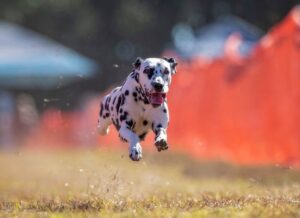
Amanda Gill of Crescent Hill Dalmatians shares her insights on various topics regarding dog sports and performance events.

Marie Zink is the breeder behind the Bret D Dalmatians. Read about the kennel’s beginnings, champions, dogs, puppies, and more!
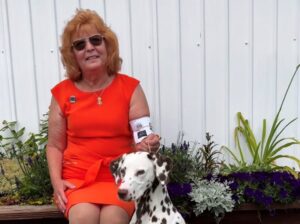
Diana Skibinski is the breeder behind the Folklore Dalmatians. Read about the kennel’s beginnings, champions, dogs, puppies, and more!
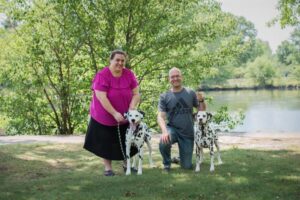
Beth Anne Johnson is the breeder behind the Prestige Dalmatians. Read about the kennel’s beginnings, dogs, puppies, and more!
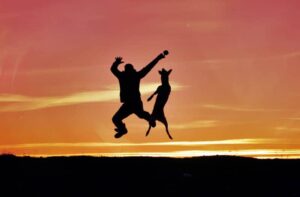
Any good dog parent knows that ALL dogs have the potential to help us stay active. That being said, check out this list of energetic dogs.
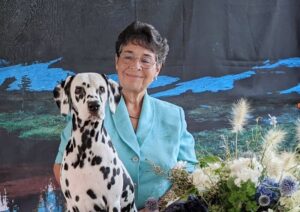
Insights from an Owner Handler, Meg Callea. Read about her opinions on various topics about dog handling in the modern show ring.
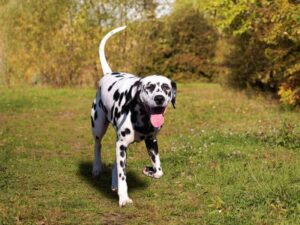
Interview with Non-Sporting Group Breeder Carol O’Brien – Thanewood Dalmatians came about because my first “show dog,” who taught me a lot
The best way to ensure a long and happy relationship with a purebred dog is to purchase one from a responsible breeder. Not sure where to begin?
Contact the National Parent Club’s Breeder Referral Program, which is listed on the AKC Breeder Referral Contacts page.
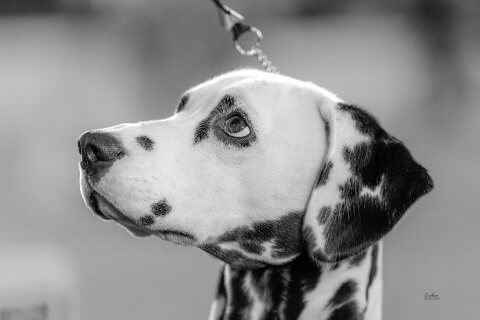

"*" indicates required fields
Showsight Magazine–the world’s most influential purebred dog publication since 1992. Each issue reaches a global audience dedicated to preserving the history and health of purpose bred dogs. Filled with award-winning editorial focused on news and insights from the dog show community, top breeders, handlers, AKC Judges, and more!